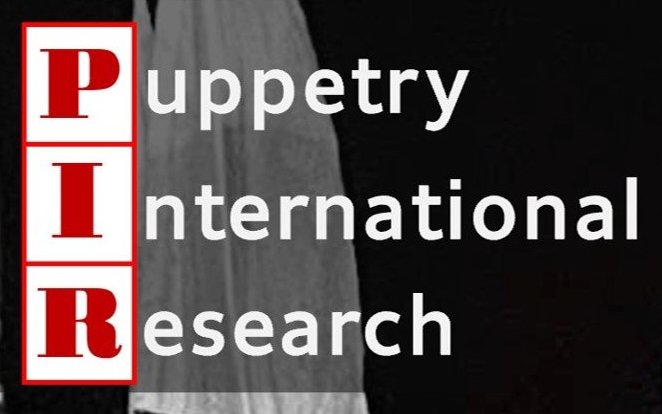2018 UNIMA-USA Scholarship Recipient: Valerie Meiss
/A report by Valerie Meiss
I received the 2018 UNIMA-USA Scholarship to Study Abroad, and it seems cheap to call it “life-changing”. I will say that any attempt to explain my experiences, studies, the friends I made, any of it, will fall short.
In 2017, I attended a masterclass at The Center of Puppetry Arts with Hachioji Kuruma Ningyō, a puppetry troop from Japan, led by Koryu Nishikawa V. Kuruma Ningyō incorporates all the beauty and fluidity of movement of Ningyō Jōruri (bunraku) style, but performed by a single puppeteer, on a small cart. I told Nishikawa-san I wish I’d known to seek it out when I was in Japan (months earlier). He told me the next time I was in Japan he could teach me this style and more.
I applied for the scholarship to do just that, and attend the Iida Puppet Festa, an international festival in Iida, Nagano. I was also invited to teach my own workshop at a small craft cafe in Tokyo.
Practicing with Japanese traditional puppets in Iida.
My time in Hachioji was brief but incredible. I dropped in on a summer program and stayed after to watch the troop rehearse. My Japanese is limited (but functional), so most of my learning was movement-based. My notes consist of sketches, designs, and shorthand directions. My last evening there, during a typhoon, we lost power. We spent a few hours in the dark theatre, playing Japanese pop songs (of which I know exactly one, but it was played) on a guitar. It was one of many unexpected moments of “cultural exchange” that I treasure most.
The following days were spent in Iida, which, on its surface, seems entirely devoted to apples and puppetry. The city is full of public art on these themes, including a “Puppetry Clock” which every hour, invites passers-by to see an animatronic puppet show, with an appearance by “Poh”, the yellow-clad, apple-hatted mascot of Iida Puppet Festa. I saw shows and met puppeteers from all over. Highlights included the following: speaking Japanese to a man who translated to Russian for new Russian friends; trading phrases with puppeteers from the Basque country, as they taught Japanese kids “The Macarena” in giant parade puppets; unexpectedly finding a new best friend with limited English, and falling in with his troop, Divadlo Alfa, from the Czech Republic (who I’ll visit soon, after this chance run-in); and being taken to lunch by a Japanese grandmother and grandson, to whom I gave some of my workshop eyeballs (“te-me”, meaning “hand-eyes”).
In Iida, I continued studying Kuruma Ningyō, as they were also there. Before leaving, I said goodbye to my sensei, who I’d not see for the rest of my trip. I tried to explain in Japanese how grateful I was for this opportunity, but that I didn’t have words in Japanese, nor in English. “It’s overwhelming!” I said in English, because I don’t know that word in Japanese. “Ah! Overwhelming!” Nishikawa-san exclaimed, understanding.
I still don’t have words, in either language. Only “overwhelming.”
I adjusted a few days of my trip to visit my new Czech friends in the tiny town of Higashi-kagawa. Divadlo Alfa was performing their Three Musketeers show at Toramaru Puppet Land, a set of plain buildings on a hill in the middle of nowhere. Inside is like a Japanese version of the Center for Puppetry Arts. It has an incredible theatre and museum, complete with hands-on learning, a monitor set-up, and one of the densest puppet-populated rooms I’ve ever seen. I was only there for a day, but it was one of my favourites from that trip. Plenty of this trip I knew would blow my mind, but it was the unexpected detours that stick with me the most.
Workshop at Sheena to Ippei, photo by Shota Kaneko
Back in Tokyo, I had a workshop. I had some puppets with me, and a tanuki hand-and-rod style puppet I made just for this trip (and used throughout, to the delight of children and several adults). We used sets of te-me I made, and worked on characterization through movement. Before long we were sticking the eyes on inanimate objects and creating new characters. It was a true test of my Japanese (one of many) and a perfect day with new friends.
Toward the end of my trip I no longer felt sad if I missed something,“I’ll be back,” I realized. This scholarship was an introduction to so much: Kuruma Ningyō, Japanese (which I studied nonstop since accepting the scholarship), Czech puppetry (I’m set to do more with my friends over there), and has become fodder (both in content and design) for my work in progress.
If anyone is interested in this scholarship, apply for it. You’ll learn so much: what you intended to learn, and so much more, if you’re willing to work for it and wander off-course a bit.
I recommend it.
P.S. Learn the language.
Tanuki-chan (puppet) and friends. From Soh’s (center) Instagram.






